In September of 2014, while traveling to hunt in Newfoundland for my first moose hunt, I had no idea what to expect. Showing up on the ROCK (The
Island of Newfoundland & Labrador) had me eager for my first true big game experience outside of the whitetail woods. Since we were hunting moose, that was our focus. I knew nothing about the Woodland Caribou that roamed the islands along with moose, and had never even seen a caribou. We hunted moose all week with multiple shot opportunities, close calls, and a low shoulder shot at 53 yards that yielded no recovery. I took away what felt like years of experience and knowledge with the number of moose encounters, and I left the island yearning for more; but it wasn’t moose that I wanted to return to hunt.
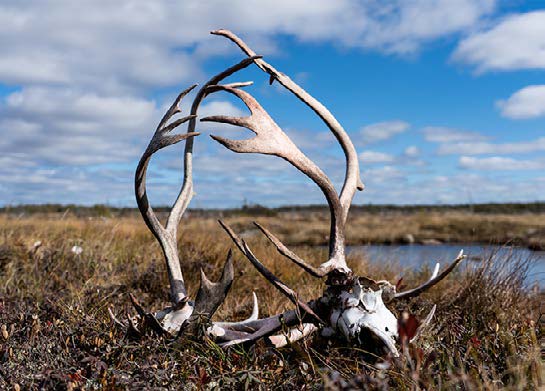
From the first time I laid eyes on a caribou herd, I was fascinated. They were constantly moving with seemingly no purpose on trails hundreds of years old, worn deeply into the rock ridges. This was from years of migration from feeding to breeding to calving grounds. Bright white manes and dark gray colored capes of the big bulls (or Stags as referred to by Newfoundlanders) make them easy to spot from a distance while they move into position to gather their cows for the upcoming rut. The stag tips his head back, rolling his giant pine-stained antlers side to side while curling his lips and snorting sounds that almost sound like that of a common barnyard pig. This mating ritual is a sign of dominance to other stags and is used to push the does together into a group that he’ll watch over for the coming weeks, waiting for the chance to breed. Day after day, when the moose activity slowed, the caribou activity picked up. When the hunt was over, I knew one thing was certain; I was going to be back, and I was going to hunt the woodland caribou!
While the woodland caribou is spread throughout the boreal forests of Canada, Newfoundland is the only place in the world with a huntable population. When Quebec disbanded their hunt on the Quebec Labrador herd of Barren Ground Caribou in 2015, the Woodland Caribou became an even more sought-after sub-species. Fears of Newfoundland going the route of Quebec are real. Population numbers are on the decline for several reasons and the quantity of available licenses are reflective of that. There are currently just 204 non-resident licenses available only through outfitters who hunt select areas throughout the island of Newfoundland and it is required that non-residents hunt with an outfitter. One of the main reasons for lower numbers is that fewer calves are surviving their first year of life, attributed to predation with more calves being preyed on by coyotes and black bears than ever before. A common theory for this is their habitat is being fragmented because of modern practices of forestry, agriculture and other activities. This has reduced the habitable areas which limits the mother’s ability to protect or shelter calves from predators.
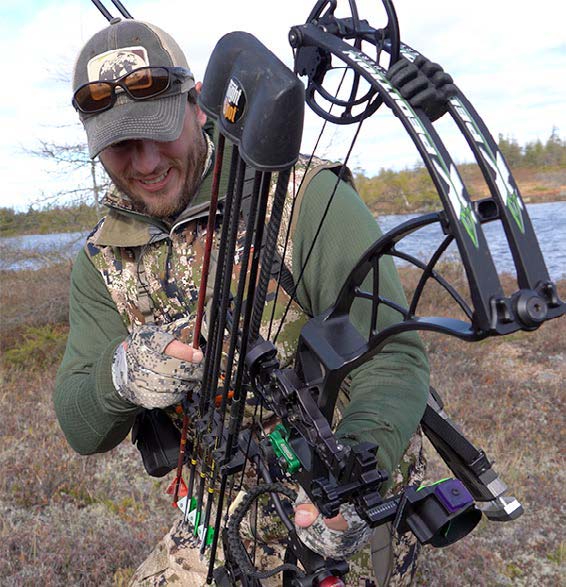
Dreams Come True
Since my first trip to Newfoundland, I have become infatuated with the Woodland Caribou. My annual business trips to create moose hunting videos, TV shows and photography projects for my clients at Conne River Outfitting had yielded great success and stories while taking part in many Moose and Black Bear harvests. After four seasons, my wait to hunt the Woodland Caribou was finally over. We were offered two Woodland Caribou tags to help promote the outfitter’s ongoing success for future hunters.
On this hunt, fellow Struttinbuck team member Brandon Hunt and another hunting partner were able to share the experience. After four days in spike camp focused on moose hunting, the float plane picked us up and we relocated back to the main lodge for increased access by boat and UTV to the Caribou herds. On the fifth morning of the hunt, we embarked on a 5-hour trip into the bush. After scraping the frost off the boat seats, we headed across the glassy lake to load up into the utility vehicles and drive nearly 100 km into the wilderness towards the caribou breeding grounds.
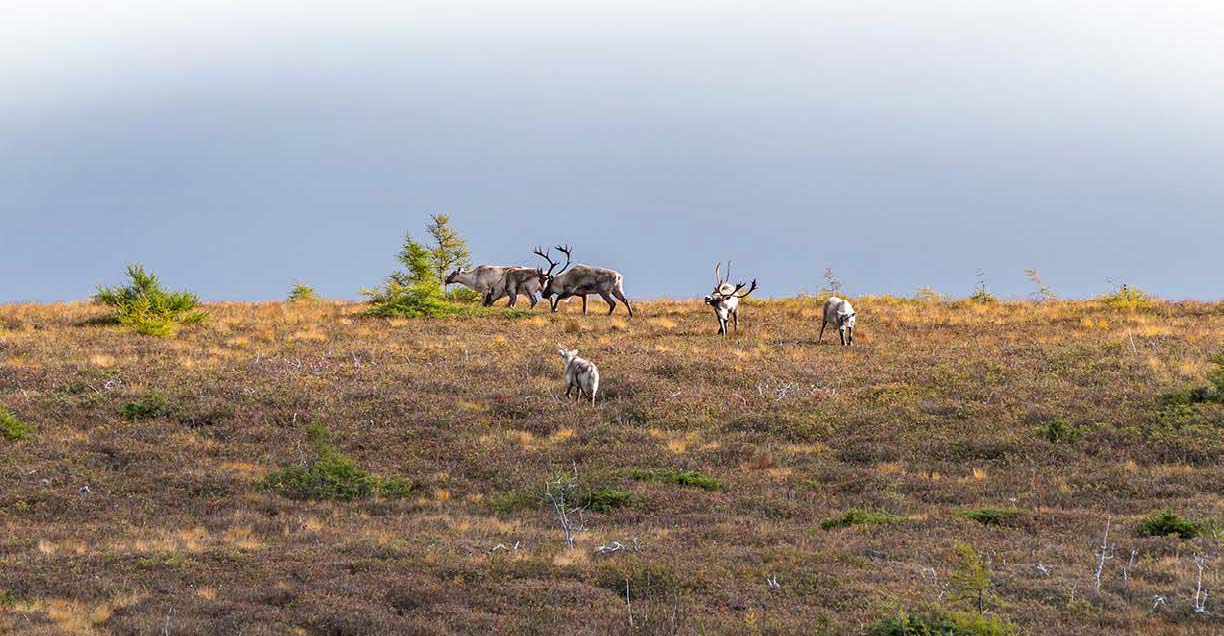
By 11 am, we were finally off the UTV’s and on foot. Within the first 10 minutes of walking and glassing, we had found ourselves in the midst of great caribou sign with rubs on what seemed like every small spruce tree we passed. Not unlike the whitetail bucks, Woodland Caribou will rub trees to show signs of aggression and mark their territories. With the sign being strong, I was highly optimistic for what would come throughout the day.
We quickly made way to a glassing point a mile or so further into the bush. It was now early afternoon and we decided to take a break for lunch and started a small fire to take the chill of the day off. After eating our lunch and a few quick stories, I pulled the spotting scope out to look at the small pockets of timber at a distance. Within minutes, I spotted a beautiful stag, and we immediately went into hunt-mode.
We had approximately 1,000 yards to close while the daylight was fading quickly. Reaching the higher point between us and the small herd of caribou, we stopped to look again and develop the right game plan. I decided to pull the spotting scope out just one more time to size up the terrain, cover and find any other caribou around that we may run into during the stalk. As soon as I put the spotting scope to my eye, I spotted a different stag half the distance to the one we were originally stalking. The plan quickly changed, and we closed the distance on the bigger stag.
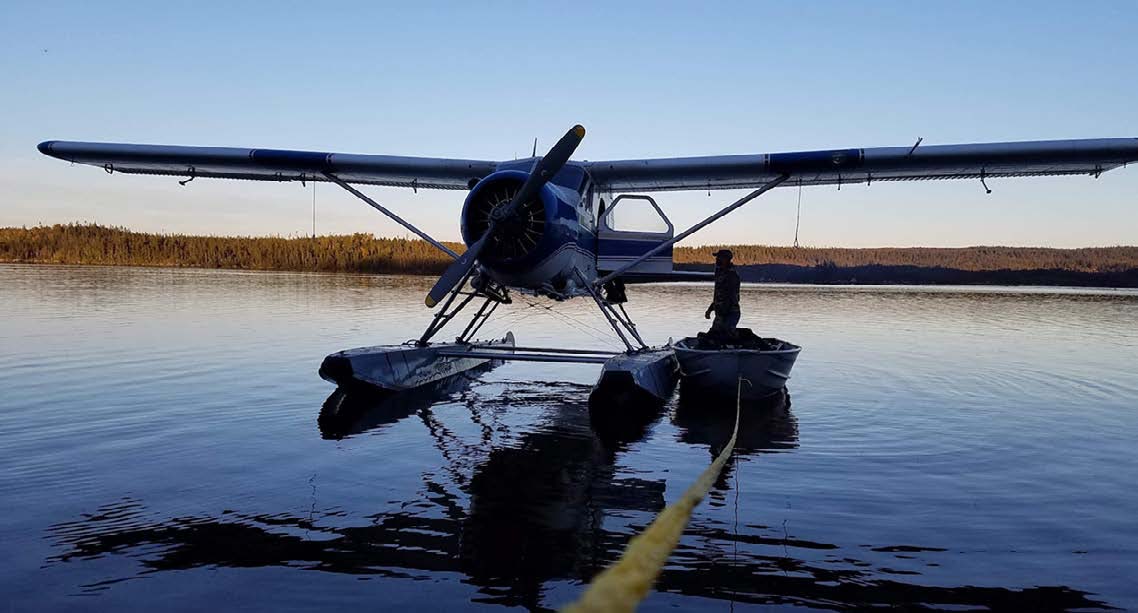
With this being the second to last day of the hunt, and the rarity of holding a Woodland Caribou tag weighing on my mind, I carried my rifle and my bow into the stalk. I was not willing to let this opportunity slip away should the archery shot not present itself.
When we reached 75 yards, I was able to find a hole in the trees that put me within bow distance of the big stag and his herd of doe caribou. Upon crawling into the opening of the spruce thicket, I had a clear shot at the big stag at exactly 50 yards. Checking with the two cameramen that they were on the stag, I ranged him again, and drew my bow, settling the pin just behind his shoulder and let the arrow fly.
My arrow hit its mark and the stag disappeared around the corner and expired just out of sight of the cameras. The entire team was excited, and I had accomplished a goal of mine that was created just five short years prior upon seeing my first Woodland Caribou.
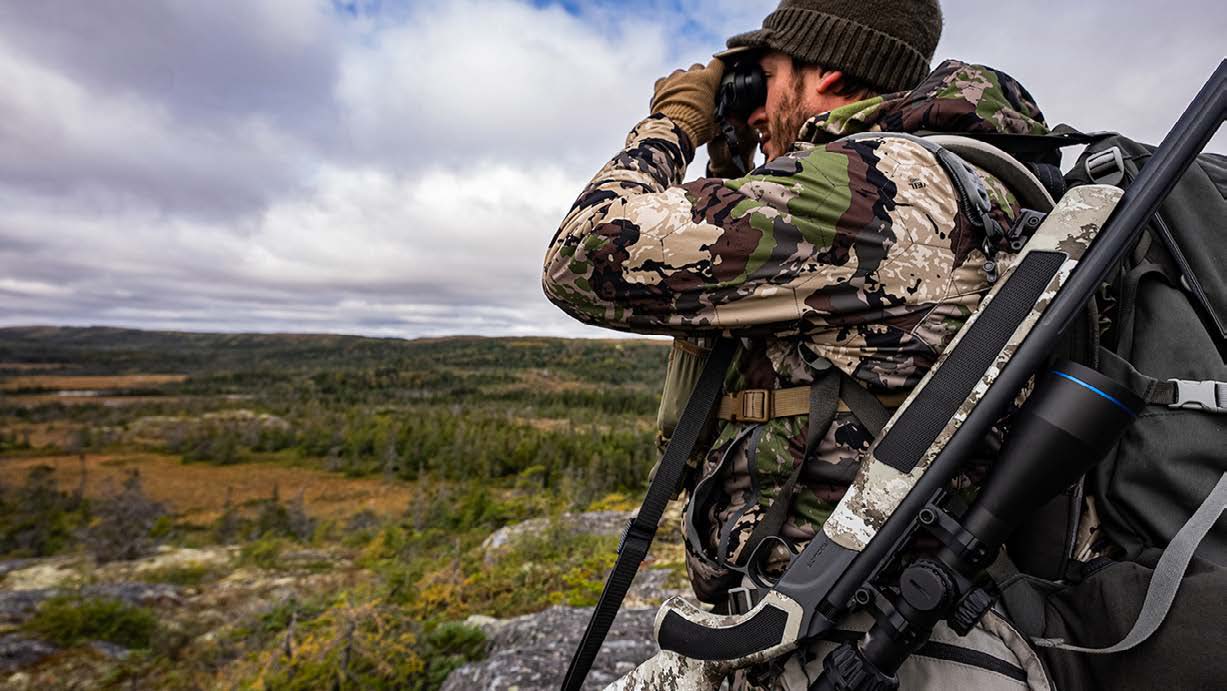
Walking up on this gorgeous animal left me with bittersweet feelings about the hunt. These animals are majestic, and they’re truly a joy to hunt; seemingly made for bowhunting. Every hunt holds a different story and a different meaning in our hearts, but this one left me wanting more. I had shot the first caribou I had ever stalked in my life.
It was then that I made myself a promise; I will be back for the hunt of a lifetime.
In 2019, Conne River Outfitting was sold to a group of private owners. When the sale was final, I received a call to continue doing their marketing efforts. With conflicting hunts that first year, I was not able to return to Newfoundland in 2019 and work with the new owners. After the first season, Covid took the world by surprise, and it wasn’t until 2021 that I was able to return.
The summer of 2021 came with great anticipation and a touch of nervousness as the border had not opened yet. Finally, with clock ticking, I received word that we’d be heading back to Conne River Outfitting and this time, it was to focus on Woodland Caribou.
On this hunt, I had a few goals in mind. First, I was going to take my time throughout the week, look at as many caribou as I could, and when the time was right, take the shot. Second, I was going to hunt with a muzzle loader.
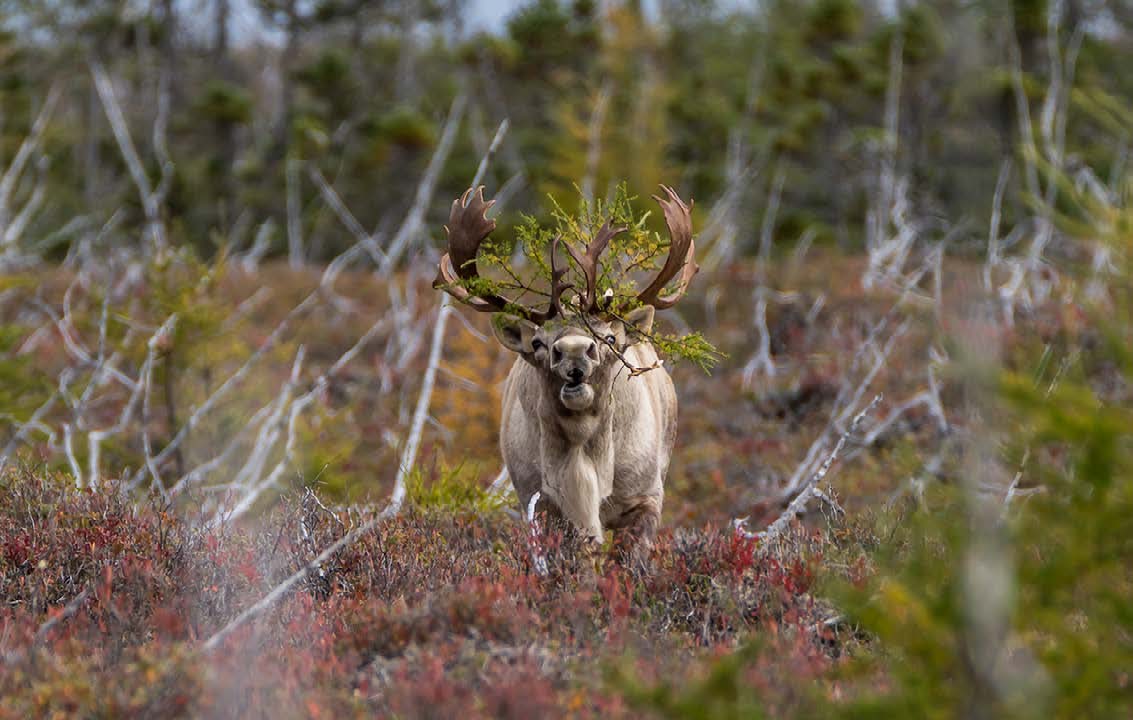
Good friend Josh Ishmael from Flatlanders TV and author of outdoor children’s book series Hank the Outdoorsman, joined me on this hunt. We would take turns filming and hunting each day, a practice we were both all too familiar with. After what seemed like an eternity of travel time, we finally landed on the ROCK and made our way into camp. With this being Josh’s first trip to Newfoundland and his first time ever hunting Caribou, I decided that he would hunt first, and I would run the cameras. Day one proved to be the day for Josh, and he was able to tag his beautiful stag with over 30 scoreable points, long main beams, great bezels and double shovels. I couldn’t be happier for Josh, his beautiful trophy and freezer full of delicious caribou meat!
(You can watch this hunt on Season 8 of Stuttinbuck on Carbon TV or Waypoint TV)
With Josh’s caribou tag notched, I had a full time cameraman for the rest of the week. Even though we had moose and black bear tags, our primary focus was finding the experience I was looking for. See, for me, it wasn’t just the giant trophy I was after on this trip, but the true experience of the hunt for caribou on the Middle Ridge of Newfoundland.
On the second day of my hunt, I glassed a beautiful stag with around 20 cows and a handful of satellite stags. After determining from around a mile out through the spotting scope that we needed to get closer, the stalk was on. The nice part about hunting with the muzzle loader is that you gain a little range and can comfortably shoot out to distances of 150 yards, but it’s still a challenge to get inside of 150 yards for a shot.
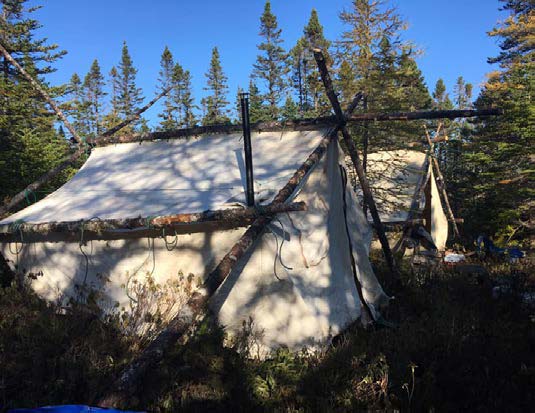
Closing the distance on this stag, we were able to see quickly that he was missing some key points that I was looking for. He was missing a back point, he only had one shovel, and his didn’t have a lot of points. Even missing these points, he would still prove to be one of the biggest antler-framed Woodland Caribou I had ever laid eyes on. It was a tough decision not to cock the hammer back on the CVA, but it was a little easier knowing that I still had six full days of hunting ahead of me.
Encounters like this became plentiful and borderline frustrating throughout the next few days.
Day after day, stalk after stalk, we kept finding ourselves inside of 100 yards of over 30 different stags that were larger than my first caribou I had shot three years prior, but still not quite what I was looking for on this hunt. With the sheer numbers of caribou, we were seeing each day and the rut coming into full swing, it wasn’t surprising to continue finding gorgeous animals with broken antlers, missing points and some were even missing an entire side of their antlers.
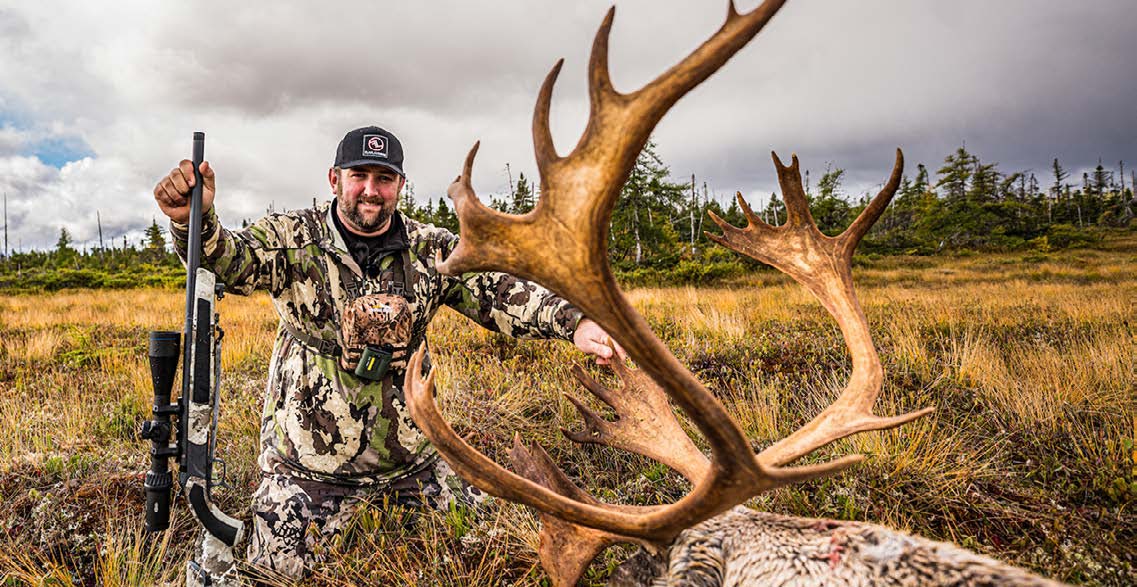
On evening five of the hunt, we were traveling back to our remote spike camp across the lake in the boat, and with light fading, we spotted what appeared to be close to 300 caribou on a hillside just a mile away. The following morning, we set out for that hillside.
From the time the boat landed on shore, we were walking among the caribou. Stag after stag filled my binoculars and spotting scope. The cameras rolled all morning, and when it was finally time for some lunch, we had counted over 300 caribou, 50+ stags that would be considered trophy animals and I hadn’t even considered taking a shot at any of them. I clearly remember the walk back to the boat, thinking that I was crazy, and wondering why I couldn’t find a single stag in that group to shoot. I think at this point, I was just too overwhelmed with the experience and too caught up in the hunt to actually remember that I was hunting, and the obvious next step was to choose one, pull the hammer back, and punch a primer on the muzzle loader.
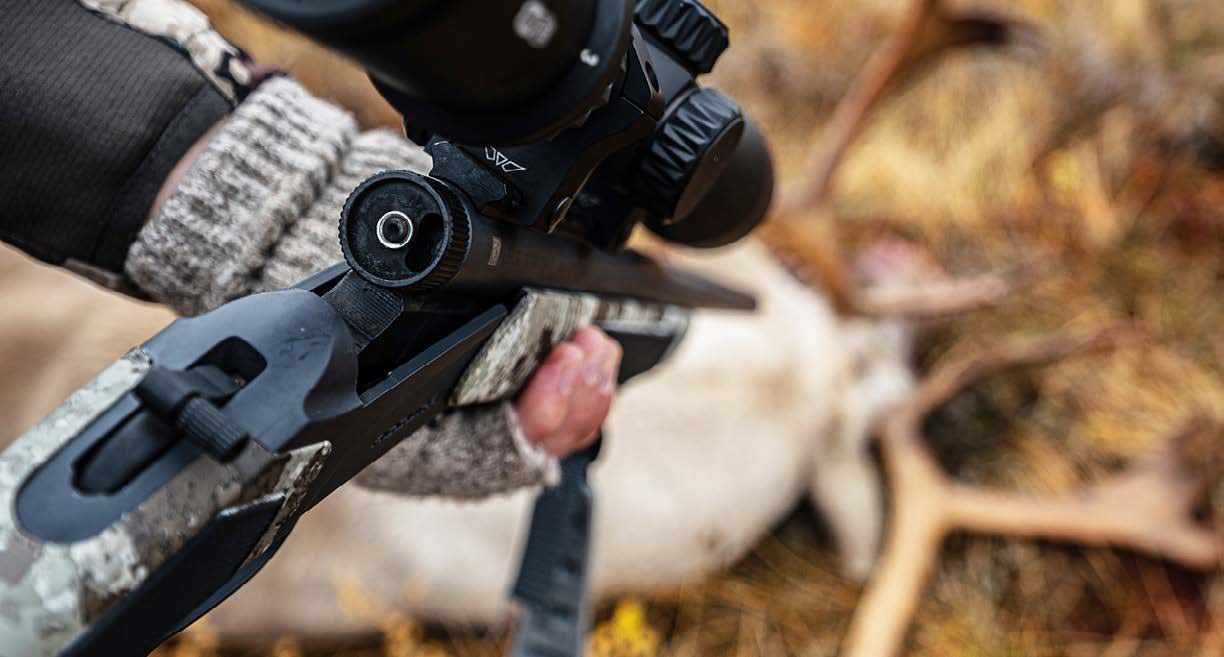
The rest of the day was kind of a blur for me. I remember getting back to camp that night and feeling a sense of calm come over me, thinking that if I don’t see another caribou the rest of the week, or get a shot, that I would still consider this hunt a success. I had truly found the hunt and the experience I was looking for.
The last morning in spike camp came with a slow start, drizzly rain, and a bleak weather forecast for the rest of the hunt. As I stood on the bank waiting for Josh and the guides to head out in the boat, I looked across the bog and spotted a doe caribou and right behind her was a mature stag. At this point in the hunt, it was time to find a good mature stag, a true representative of the quality animals available at Conne River Outfitting. That stag was fast approaching, and we quickly made a move across the bog, got into position, and with the iconic whisper from the cameraman, “I’m on him” I let the hammer down on a truly magnificent woodland caribou and as the smoke cleared, I had completed what I came to accomplish.
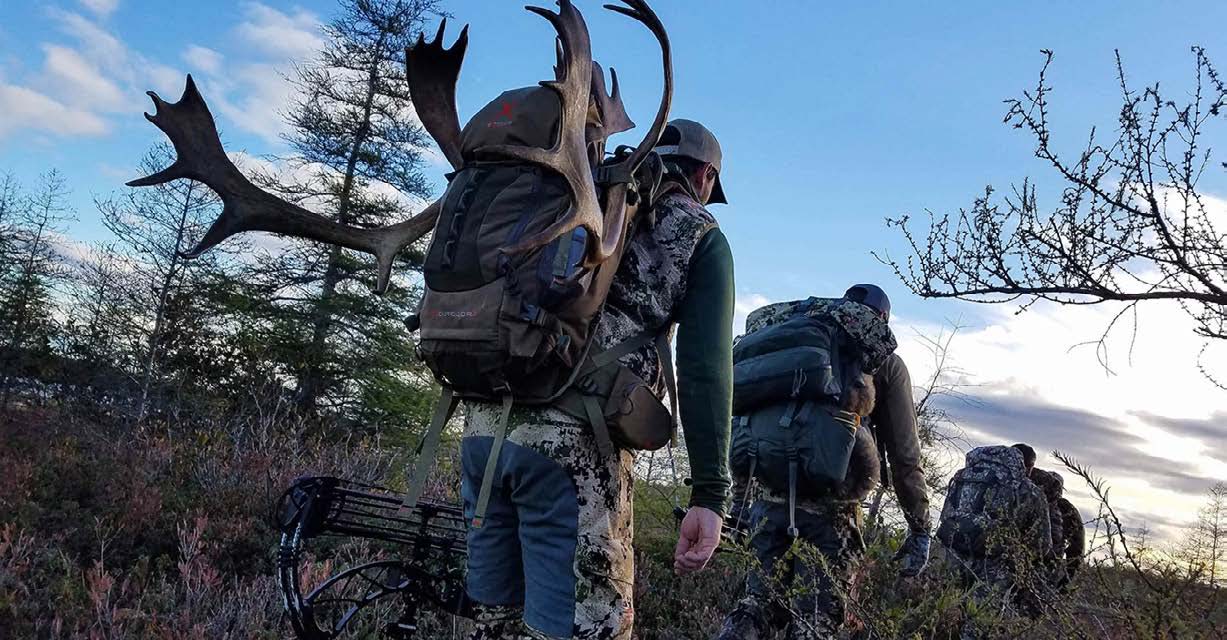
WOODLAND CARIBOU FACTS
The Woodland Caribou (or Boreal Woodland Caribou) is one of the five sub-species of caribou recognized by Boone & Crocket as part of the North American Super Slam (29 big game animals in North America).
The Boreal Woodland Caribou is the largest bodied caribou of the subspecies and is darker than the other sub-species. Their antlers are often darker in color and sport a more narrow frame than most other sub-species. The average weight is (400 lbs) (180 kg) for males; (300 lbs) (135 kg) for females. Height of about (3.5 – 4 ft)(1.05 – 1.2 m). Antlers may spread up to (5 ft) (1.5 m) wide.
The historic range of the woodland caribou covered over half of present-day Canada, spanning from Alaska to Newfoundland & Labrador. On this day, the only huntable population of Woodland Caribou reside on the island of Newfoundland & Labrador with only 204 non-resident hunting licenses available each year and are only purchasable through a registered outfitter with access to the license in their given area.
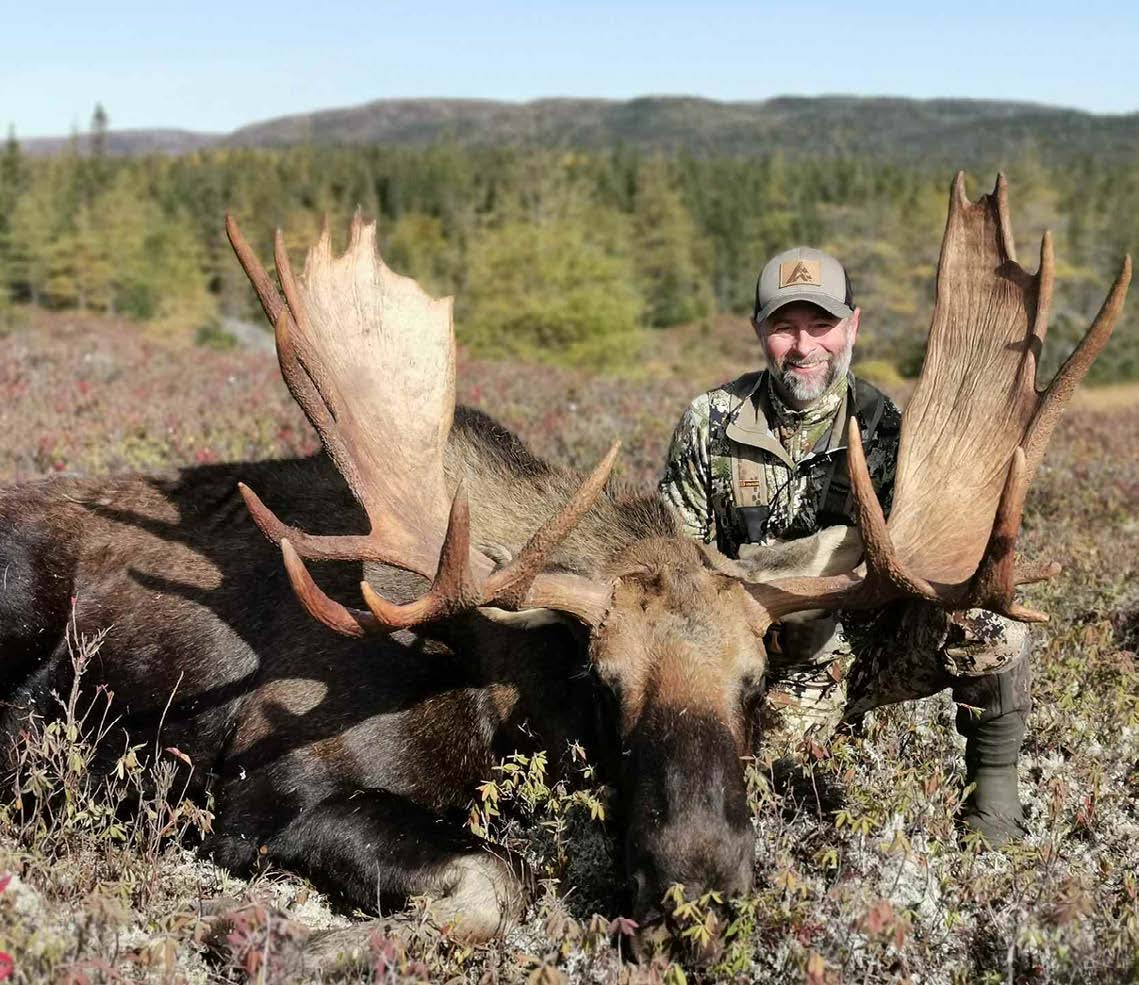
Conne River Outfitting
www.conneriveroutfitting.com
Phone: + 1 709-882-3399
Trophy Moose, Woodland Caribou and Black Bear hunting are at your fingertips with Conne River Outfitting. You can find Conne River Outfitting camps listed in both Pope & Young and Boone & Crocket record books for Moose, Woodland Caribou and Black Bear. In the most recent years, Conne River Outfitting is boasting a 100% opportunity and 90% success rate!
We operate two fully equipped remote access lodges. The remote lodges are located adjacent to lakes and in prime hunting areas. All the lodges offer amenities such as showers, hot and cold running water, delicious food, and comfortable sleeping quarters. We also offer many remote wilderness spike camps for those truly wanting that back woods, off the grid adventure.
Newfoundland is home to one of the last great wilderness areas in the world, making it the ultimate hunting destination for Moose, Woodland Caribou and Black Bear. 3 moose per square mile, the only place in the world to hunt Woodland Caribou and the chance at monster bruins, you can’t go wrong in Newfoundland.
Video:
Now Booking Moose, Caribou & Bear Hunts for 2023!
LAST MINUTE OPENING FOR 2022: Due to Covid, we have a cancellation for Woodland Caribou! Two Last Minute Openings for the 2022 Season for Trophy Woodland Caribou available.
Learn more at www.conneriveroutfitting.com or call us at 1-709-882-3399 and mention this article.
To watch this hunt and more episodes from Struttinbuck, please visit www.struttinbuck.com to find networks, airtimes, and links to watch previous seasons on Carbon TV, Waypoint TV or Pursuit UP.
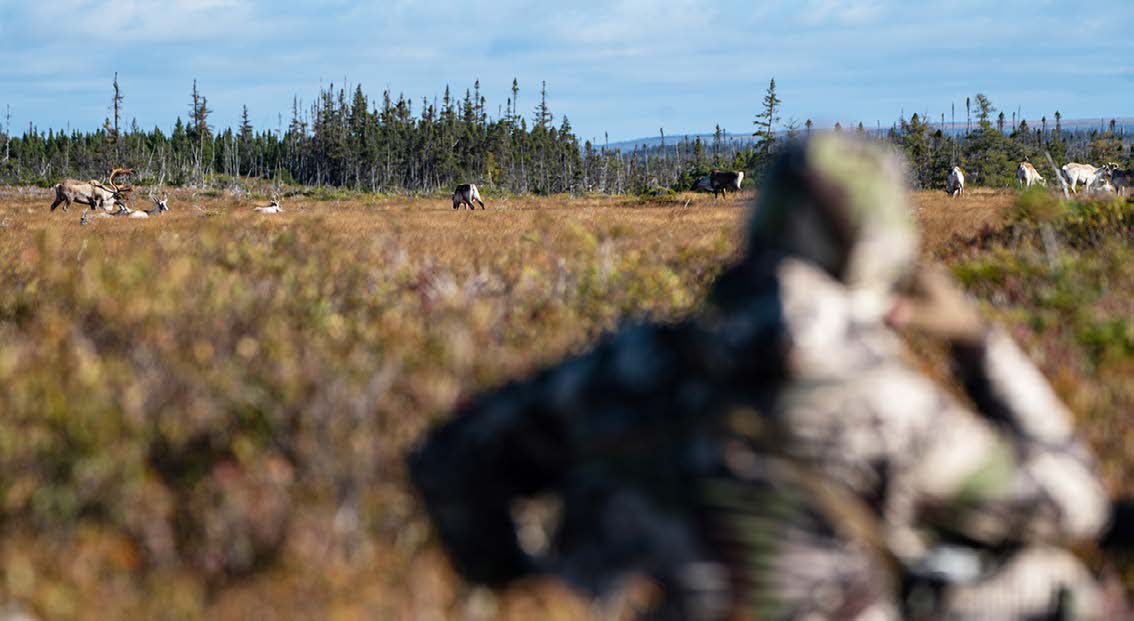
GEAR SPOTLIGHT
CLOTHING:
Pnuma Outdoors | 3L Element Rain Suit | Alpha Vertex Suit | Gunnison Merino Hoodie
WEAPON:
CVA Accura MR-X – .45 Caliber
BULLET:
Powerbelt ELR .45 – 285gr
OPTICS:
Meopta Optics Spotting Scope & Binoculars
PACK:
Pnuma Crestone Mountaineer Pack
BOOTS:
Lacrosse Alpha Lite
SHOOTING STICKS:
Swagger Bipods – Stalker Lite XL



9 Comments
gvzr9v
gu462o
tp5dfr
q3rxay
p661yx
r6zax5
kr10zz
zr15b2
47gdj7